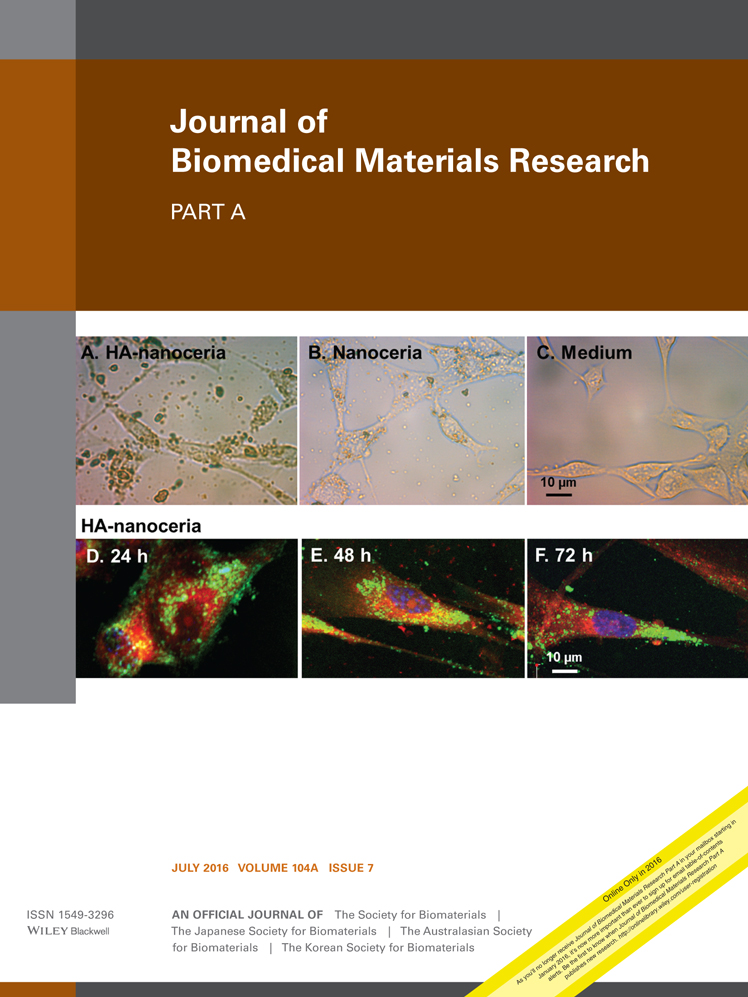Image-based quantification of fiber alignment within electrospun tissue engineering scaffolds is related to mechanical anisotropy
Abstract
It is well documented that electrospun tissue engineering scaffolds can be fabricated with variable degrees of fiber alignment to produce scaffolds with anisotropic mechanical properties. Several attempts have been made to quantify the degree of fiber alignment within an electrospun scaffold using image-based methods. However, these methods are limited by the inability to produce a quantitative measure of alignment that can be used to make comparisons across publications. Therefore, we have developed a new approach to quantifying the alignment present within a scaffold from scanning electron microscopic (SEM) images. The alignment is determined by using the Sobel approximation of the image gradient to determine the distribution of gradient angles with an image. This data was fit to a Von Mises distribution to find the dispersion parameter κ, which was used as a quantitative measure of fiber alignment. We fabricated four groups of electrospun polycaprolactone (PCL) + Gelatin scaffolds with alignments ranging from κ = 1.9 (aligned) to κ = 0.25 (random) and tested our alignment quantification method on these scaffolds. It was found that our alignment quantification method could distinguish between scaffolds of different alignments more accurately than two other published methods. Additionally, the alignment parameter κ was found to be a good predictor the mechanical anisotropy of our electrospun scaffolds. The ability to quantify fiber alignment within and make direct comparisons of scaffold fiber alignment across publications can reduce ambiguity between published results where cells are cultured on “highly aligned” fibrous scaffolds. This could have important implications for characterizing mechanics and cellular behavior on aligned tissue engineering scaffolds. © 2016 Wiley Periodicals, Inc. J Biomed Mater Res Part A: 104A: 1680–1686, 2016.




